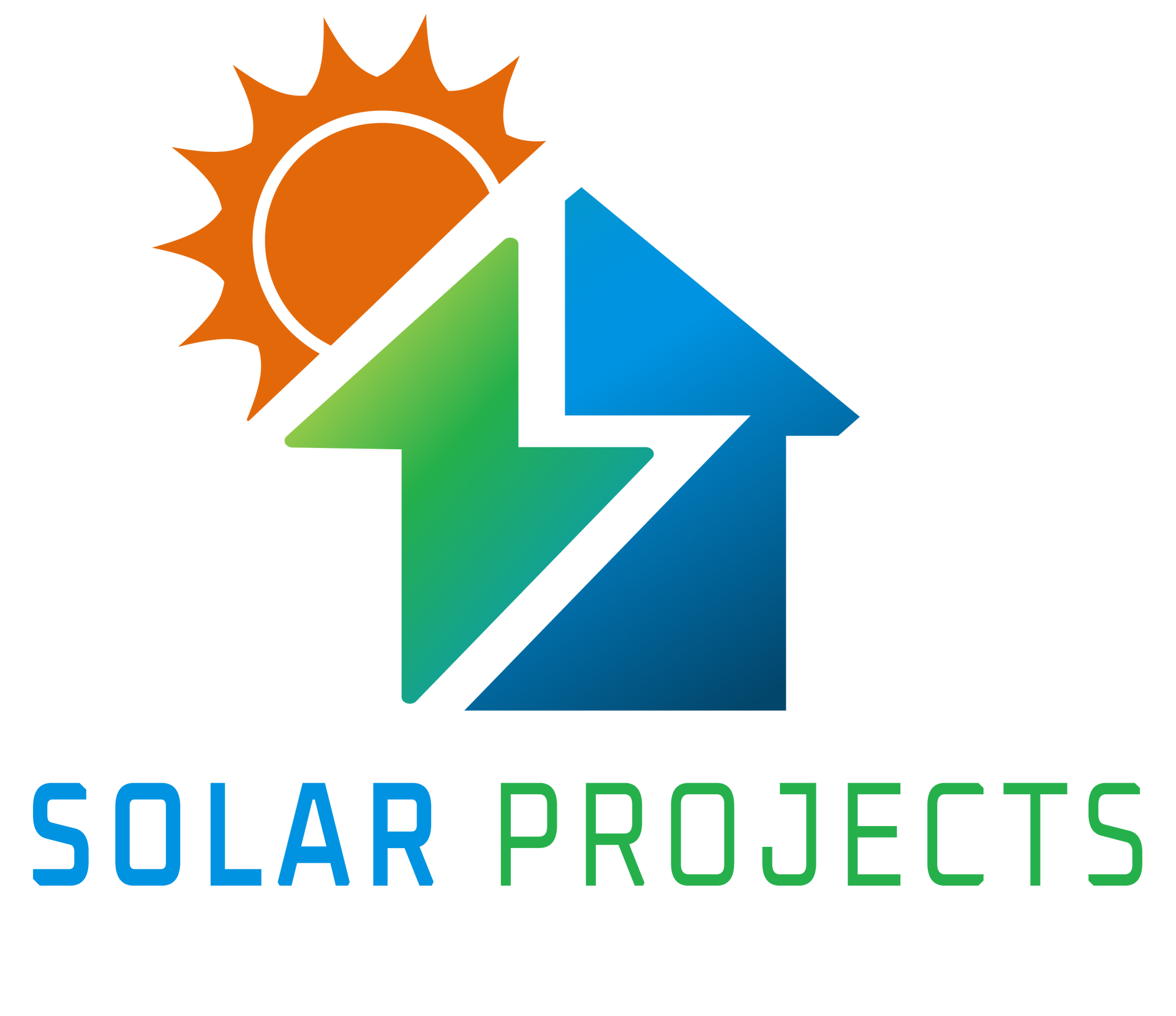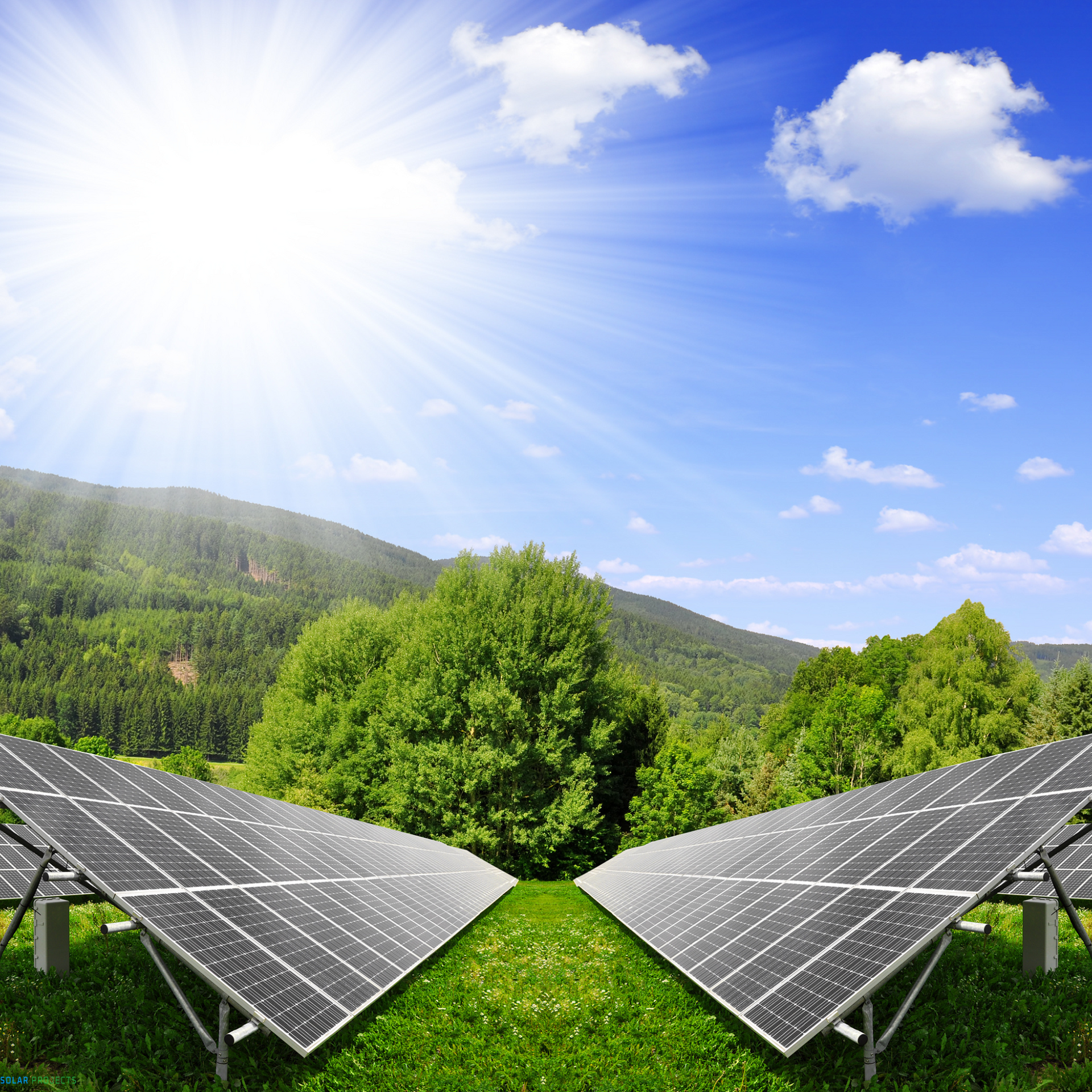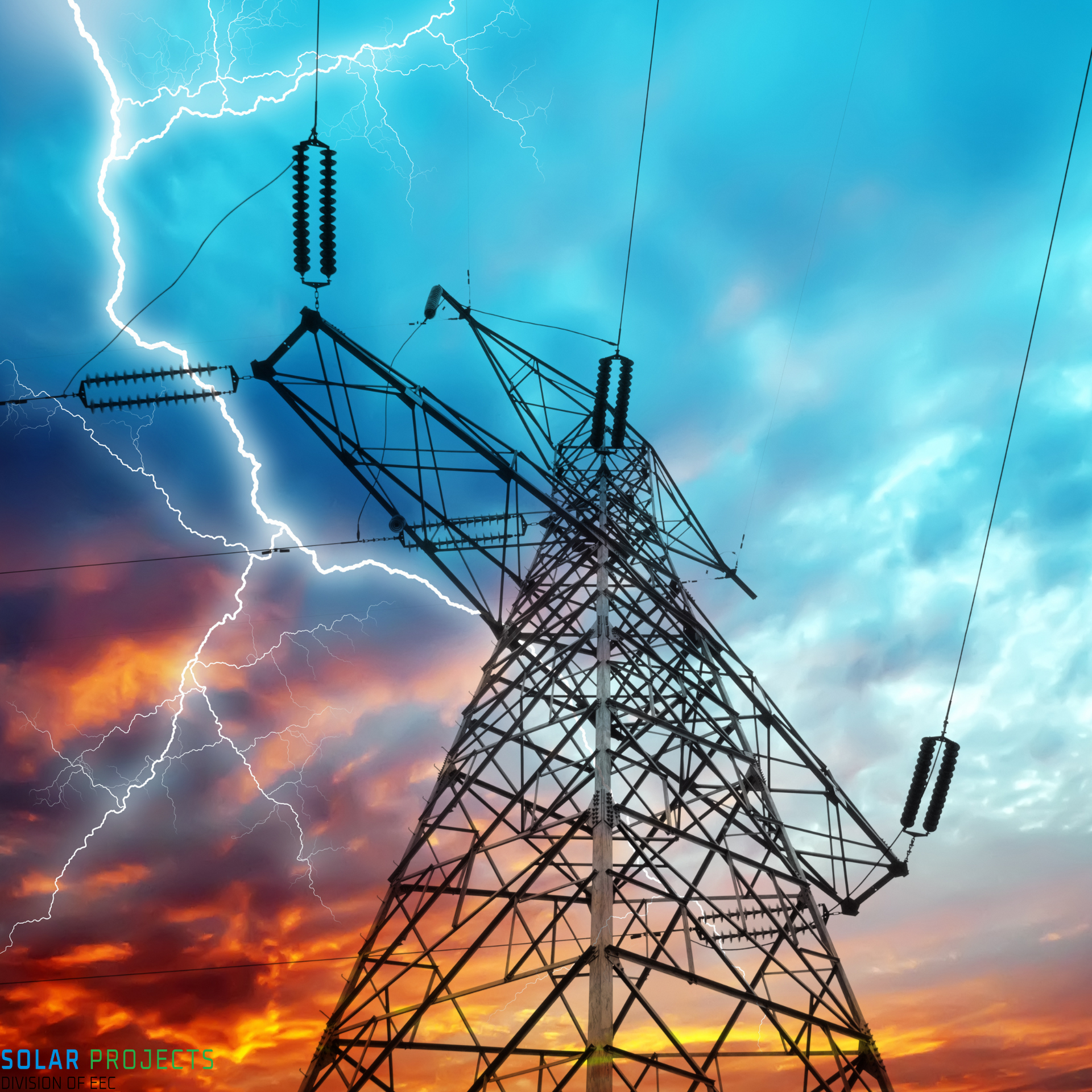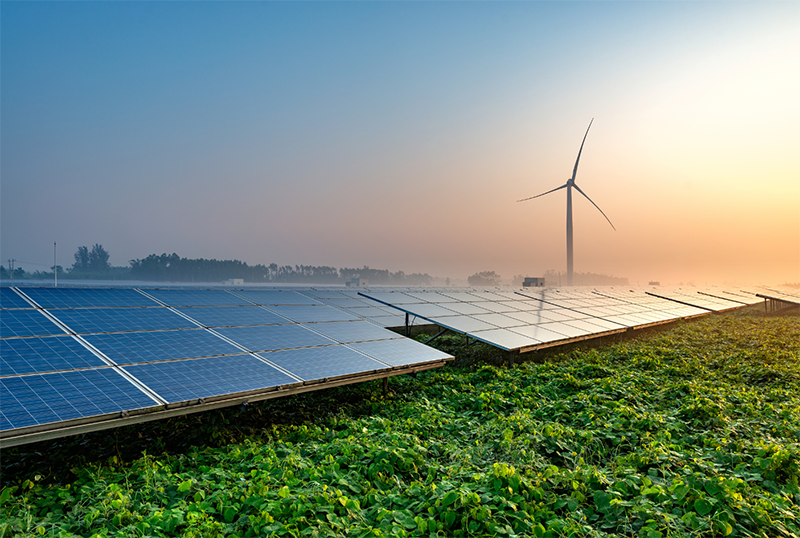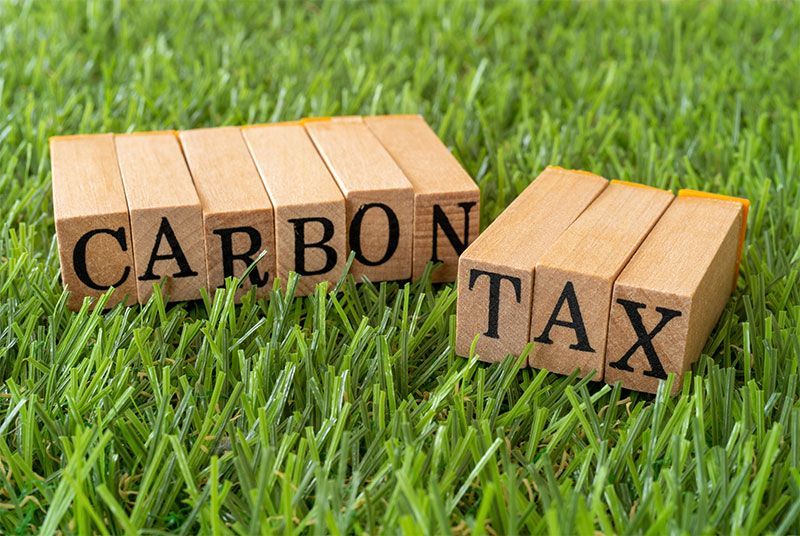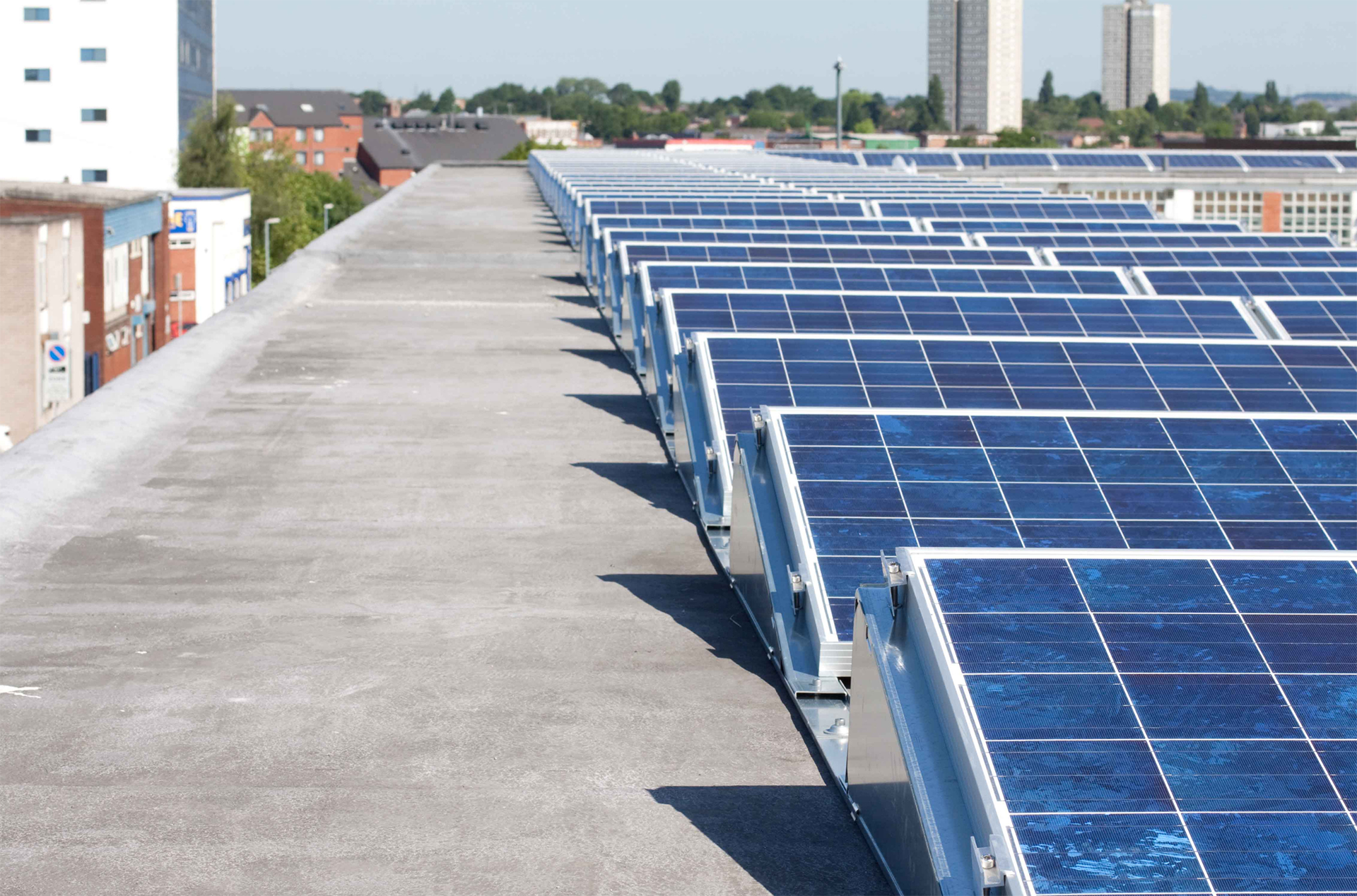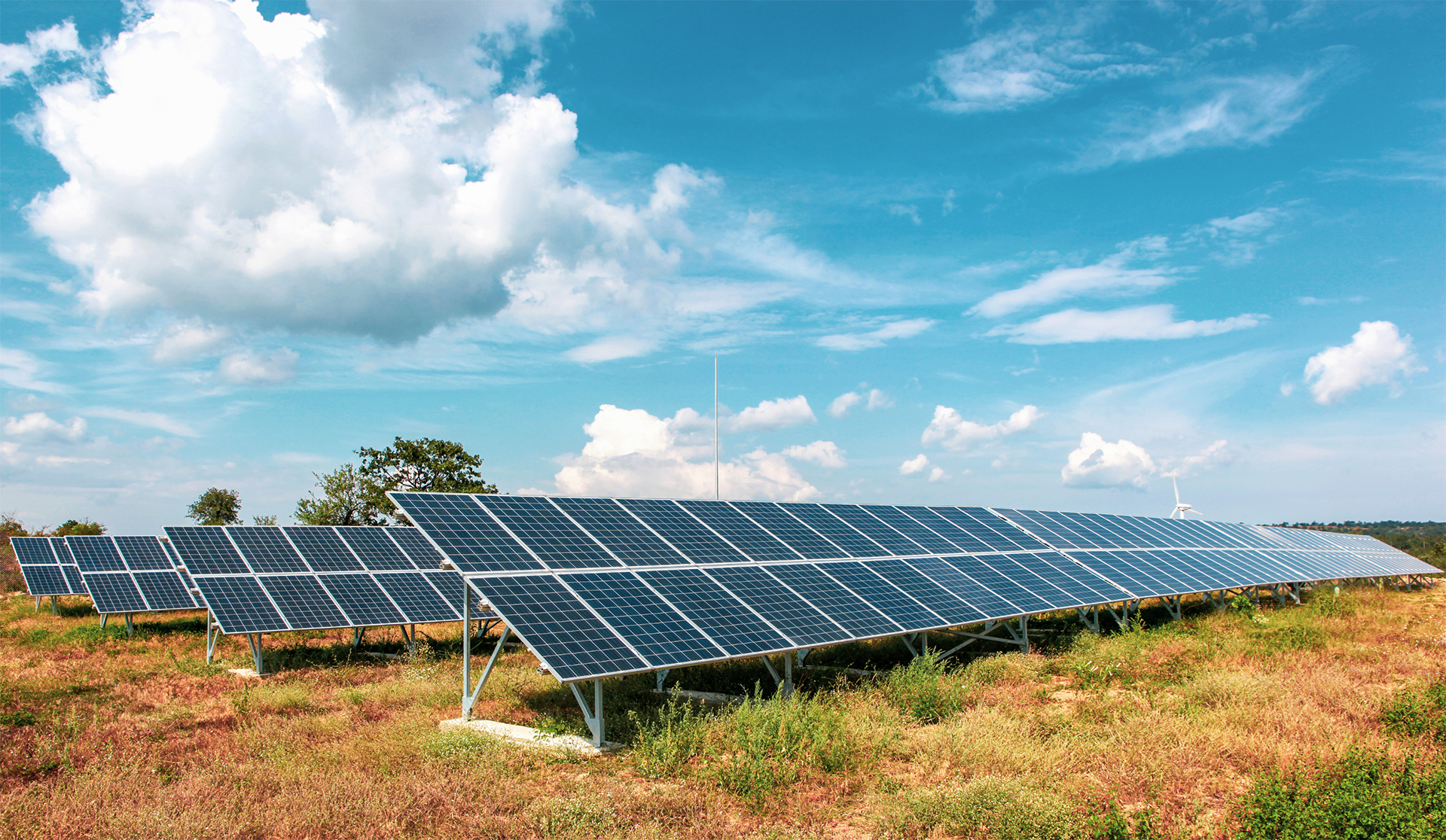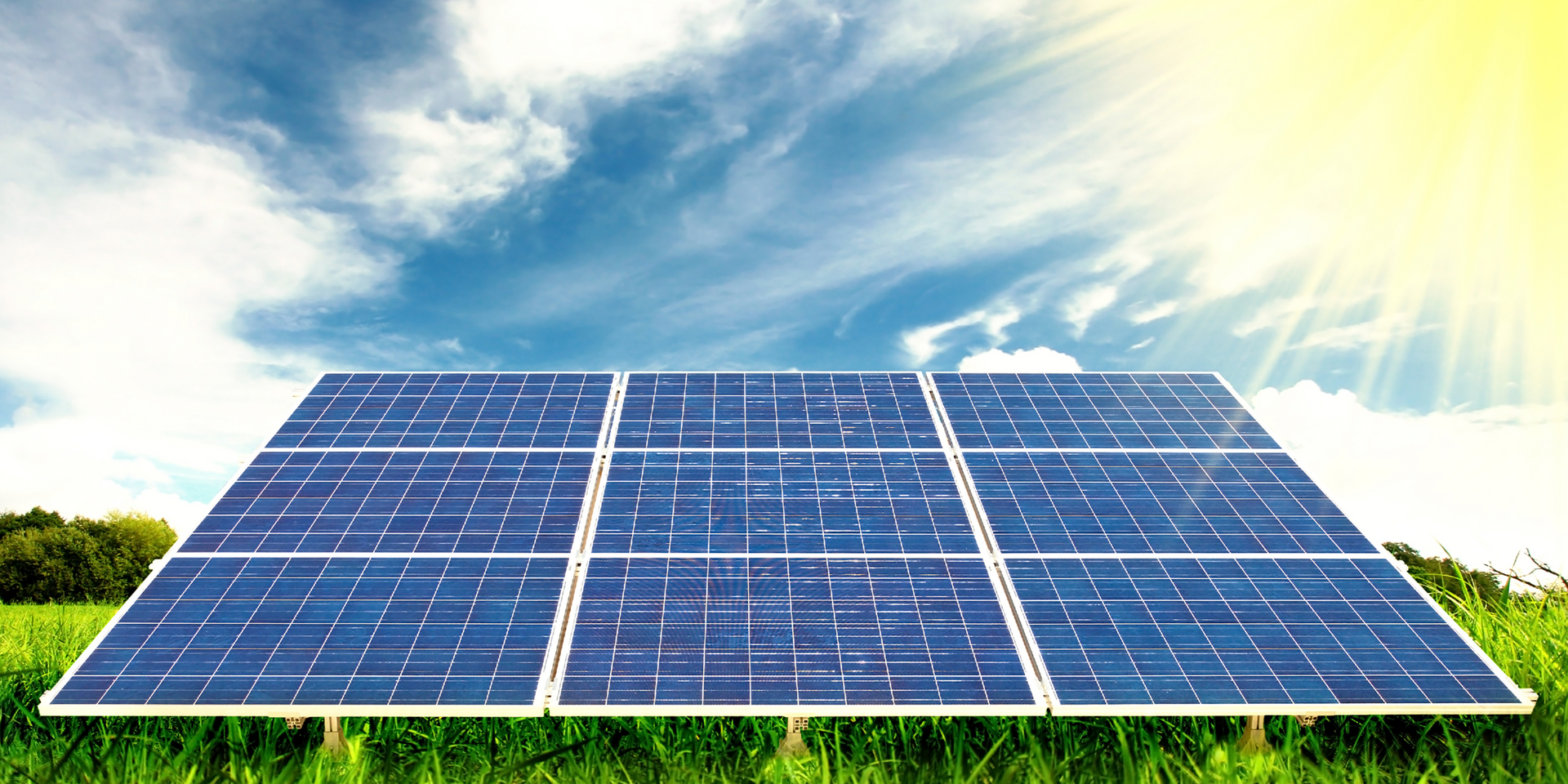A Comprehensive Guide: Implementing Renewable Energy Solutions in Businesses and Corporations
Going green is not just a trendy phrase—it's a smart move for any business.
But, if you're like most business owners, when you hear 'Go green, go solar,' you might sight in frustration, and look for the closest exit, because how does this even look practically for your company and where do you even start?
That's where we come in!
In this guide step-by-step, we answer all those questions and explain in detail how you can achieve this. You'll never feel like running again.
What are the real benefits? And how do you even start such a transformation? So many business owners have all been there, scratching their heads, thinking it sounds like a clever idea but feeling overwhelmed by the hows and whys. This guide is here to change that. We'll walk you through every step of the way, from understanding why renewable energy is not simply good for the planet but also great for your bottom line, to finally flip the switch on your renewable energy solution.
Let's get started!
Why should you even consider going green or installing renewable energy sources for your business?
Why the Price Hikes In Context of Rising Electricity Costs?
- Cost Savings: One of the most compelling reasons for a business to switch to renewable energy is the potential for significant cost savings. Renewable sources like solar and wind energy can provide electricity at a lower cost almost instantly. After the initial investment in renewable energy technology, the ongoing expenses are typically much lower, as sunlight and wind are free! Energy efficiency improvements can also reduce the overall energy demand, saving you even more money.
- Energy Independence and Security: By generating your energy from renewable sources, your business can reduce your dependence on external energy suppliers. This means no load shedding! With the current volatility of fossil fuel markets, it is crucial businesses become independent before it's too late.
- Environmental Impact: Utilizing renewable energy significantly reduces greenhouse gas emissions and the business's carbon footprint, contributing to the fight against climate change. And helps you reach your social responsibility goals. Companies are increasingly environmentally recognised for their environmental stewardship, and taking tangible steps towards sustainability can enhance their reputation among consumers, investors, and partners who are becoming more environmentally conscious.
- Government Incentives and Regulatory Compliance: Businesses are eligible to deduct 25% of the expenses incurred from purchasing qualifying assets for electricity generation (including supporting structures) from their taxable income upfront. Furthermore, as environmental regulations become stricter, adopting renewable energy can help businesses stay ahead of the curve and avoid potential fines and penalties associated with carbon emissions and energy consumption
- Brand Image and Corporate Social Responsibility (CSR): Companies that commit to renewable energy and sustainability initiatives often see a positive impact on their brand image. People are increasingly looking to support green initiatives. Demonstrating a commitment to renewable energy can enhance customer loyalty, attract positive media attention, and help recruit and retain employees who value sustainability.
Chapter 1: Understanding Your Renewable Energy Options
For businesses
5. Geothermal Energy
How to Implement:
- Geothermal Heat Pumps:
Use the earth's stable temperature for heating and cooling facilities.
- Direct Use Geothermal:
Directly tap geothermal reservoirs for heat or to generate electricity, if located near a geothermal source.
6. Ocean Energy
How to Implement:
- Tidal and Wave Energy:
More niche and suitable for businesses located near the ocean, harnessing the power of tides and waves.
- Ocean Thermal Energy Conversion (OTEC): Leverage temperature differences between surface and deep ocean waters to generate electricity.
Chapter 2: Assessing Your Renewable Energy Potential
Steps to an Energy Audit:
- Data Collection: Gathering historical energy usage data, such as electricity, gas, and water bills, to establish a baseline for energy consumption.
- Inspection and Survey: Conduct a thorough examination of the premises, including heating, ventilation, and air conditioning (HVAC) systems, lighting, electrical systems, building envelope (walls, floors, roofs, windows), and any specific processes or equipment that consume energy.
- Usage Analysis: Analyzing how and when energy is used, identifying peak consumption periods, and determining the efficiency of energy use in various parts of the building or various processes.
- Identification of Energy Conservation Measures (ECMs): Identifying opportunities to save energy, which may include upgrading to more energy-efficient equipment, improving insulation, sealing leaks, optimizing operating procedures, or changing human behaviours.
- Financial Analysis: Calculating the cost to implement recommended energy conservation measures, projected energy savings, payback periods, and return on investment (ROI) to help prioritize actions based on their financial viability.
- Report and Recommendations: Provide a detailed report that outlines the findings, recommendations, and an action plan for energy savings. This report is crucial for decision-makers to understand the potential impact of energy-saving measures
Chapter 3: Financing Your Renewable Energy Project
1.Capital Cost Estimation:
- Determine the capital cost of the project, including equipment, installation, permitting, and any other upfront costs.
2. Identifying Financing Options:
Explore various financing options, such as:
- Equity Financing: Investment in your project in exchange for ownership shares.
- Debt Financing: Loans from banks or financial institutions.
- Grants and Subsidies: Financial support from government or international organisations specifically for renewable energy projects.
- Crowdfunding: Raising small amounts of money from a large number of people, typically via the Internet.
3.Government Incentives:
- Take advantage of government incentives, tax credits, and rebates available for renewable energy projects. These can significantly reduce the project's net cost and improve the financial return.
4.Financial Modeling and Projections:
- Develop comprehensive financial models to project cash flows, return on investment (ROI), payback periods, and other financial metrics. This will be crucial for attracting investors and securing loans.
5.Seeking Investors and Partners:
- Present your project to potential investors and partners. This may include private investors, venture capitalists, renewable energy funds, and strategic partners in the energy sector.
Chapter 4: Steps to Implement Renewable Energy Solutions
Chapter 5: Overcoming Common Challenges
Although we are all for renewable energy, it's important to note that everything has its challenges. Implementing renewable energy sources can have several challenges for businesses, especially when you consider the integration with your existing infrastructure. Here's a breakdown of common obstacles you may face, so you can make an informed decision.
1. High Initial Investment: The upfront cost of renewable energy systems (solar panels, wind turbines, biomass energy systems) can be significant. For businesses with already established infrastructure, finding the capital to invest in these technologies, alongside existing commitments, can be challenging.
Solution: Explore government incentives, tax rebates, and grants designed to reduce the upfront cost of renewable energy projects. Leverage financing options like green bonds, loans, or leasing solar panels and wind turbines to spread out the costs over time.
2. Integration with Existing Infrastructure: Retrofitting or integrating renewable energy solutions into existing buildings, electrical systems, and processes can be complex and costly. There may be technical limitations or the need for significant modifications to accommodate new energy sources.
Solution: Conduct a detailed study and engineering analysis to understand how renewable energy systems can be integrated with minimal effort or cost. Consider starting small and phased in gradually.
3. Space Requirements: Renewable energy installations, especially solar farms, and wind turbines, require considerable space. Urban businesses or those with limited unused land may find it difficult to allocate the necessary space without disrupting existing operations.
Solution: Utilize rooftop solar panels or vertical wind turbines that require less ground space. Explore community solar projects or off-site renewable energy purchases if on-site space is limited.
4. Intermittency and Reliability: Renewable energy sources like solar and wind are intermittent, meaning they don't produce energy all the time. Integrating these sources with existing energy systems while ensuring consistent and reliable energy supply poses a technical challenge.
Solution: Invest in energy storage systems like batteries to store excess energy for use during low production periods. Alternatively, implement a hybrid system that combines multiple types of renewable energy sources to balance out intermittent.
5. Regulatory and Permitting Hurdles: Navigating the regulatory landscape for renewable energy projects can be complex and time-consuming. Businesses must comply with local, state, and federal regulations, which may include obtaining various permits and passing environmental reviews, adding layers of complexity when integrating with existing operations.
Solution: Engage with regulatory consultants or legal experts early in the project planning process to navigate permitting and compliance smoothly. Build relationships with local authorities to expedite approvals.
6. Energy Storage and Management: To overcome the intermittent of renewable sources, businesses may need to invest in energy storage systems, such as batteries. This adds another layer of cost and complexity, especially for businesses trying to retrofit storage solutions into existing infrastructure.
Solution: Adopt advanced energy management systems (EMS) to optimize the use and storage of renewable energy. Consider smart grid technologies that can dynamically manage energy supply and demand.
7. Technical Expertise: Developing and integrating renewable energy solutions requires certain technical expertise. Businesses often need to hire new staff or train existing employees, which can be time-consuming and expensive.
Solution: Partner with renewable energy firms for project development and management. Invest in training for existing staff to build in-house expertise over time.
Chapter 6: Monitoring, Maintenance, and Scaling
1. Setting Up Systems for Monitoring Energy Production and Usage
Objective: Implement comprehensive monitoring systems to track energy production, consumption, and system performance in real time.
- Tools and Technology: Invest in smart meters, sensors, and energy management software that provide detailed insights into energy usage patterns and production efficiency.
- Data Analysis: Utilize data analytics platforms to process and analyze the collected data, identifying trends and deviations in energy performance.
- Real-Time Alerts: Set up alert systems to notify management of any significant changes or anomalies in energy production or usage, allowing for quick responses.
2. Routine Maintenance and Troubleshooting
Objective: Ensure the renewable energy system operates at peak efficiency through regular maintenance and prompt troubleshooting.
- Maintenance Schedule: Develop a comprehensive maintenance schedule based on manufacturer recommendations and industry best practices, including both preventive and corrective maintenance tasks.
- Training: Equip your maintenance team with the necessary skills and knowledge to handle routine checks and troubleshoot common issues.
- Service Contracts: Consider service contracts with equipment providers or specialized maintenance firms to ensure professional upkeep and timely repairs.
3. Evaluating Performance and Identifying Areas for Improvement
Objective: Continuously assess system performance to identify opportunities for optimisation and enhancement.
- Performance Metrics: Define clear performance indicators, such as capacity factor, energy yield, and system efficiency, to measure the success of your renewable energy system.
- Benchmarking: Compare performance against industry benchmarks or similar installations to gauge relative performance.
- Continuous Improvement: Use insights gained from performance data to implement improvements, such as adjusting operational parameters, retrofitting components, or updating maintenance practices.
By Clerissa Holm
•
March 25, 2025
Imagine being able to charge your phone with nothing but your clothing. Well, all you need to make that possible is solar fabrics. Solar fabrics are a relatively new solar technology that uses different materials like photovoltaic textiles (made from two different types of polymer fibers that are woven together) to create solar fibers that generate power just like regular solar panels do. This dynamic solar technology is not only incredibly useful but also very stylish. The sustainable energy market is changing, people don’t just want stagnant energy solutions but are leaning more towards flexible and ambitious new solutions that combine efficiency with aesthetics. This unique approach to sustainable energy is sure to change the sustainable energy industry for the better. Here is everything you need to know about this revolutionary solar technology.
By Clerissa Holm
•
March 24, 2025
Have you ever heard of the word Agrivoltaics? If not, don’t worry. Here is everything you need to know about agrivoltaics. Agrivoltaics refers to the use of solar panels to generate power while using the same land for agriculture. In other words, grow crops on the same land you use for solar panels. This allows you to save space and use your land more efficiently by simultaneously generating power. That being said, why do you need to know about agrivoltaics? In a world full of mass production and disproportionate waste, available space is growing rare and sustainable energy solutions are becoming more and more relevant. That is especially true if you are a farmer or a business operating in South Africa, where power outages are the norm rather than the exception. Whether you are a farmer in the agriculture industry looking for a more sustainable energy solution, a business looking to invest in a new and exciting renewable energy niche or an individual trying to go off the grid, agrivoltaics is the perfect solution for your renewable energy needs.
By Clerissa Holm
•
February 3, 2025
South Africa, with its high reliance on coal-based energy, is taking bold steps to address climate change. Corporate social responsibility (CSR) plays a pivotal role in reducing carbon footprints, with businesses aligning their operations with environmental sustainability. Regulatory frameworks such as the Climate Change Act and Carbon Tax Act, coupled with voluntary sustainability initiatives, create opportunities for companies to transition to greener practices. Among these, adopting renewable energy solutions like solar panel installations is a practical and impactful step.
By Clerissa Holm
•
February 3, 2025
Solar energy is more than a renewable power source; it’s a force for social, economic, and environmental change. Across the globe, solar projects are illuminating homes, powering businesses, and fostering sustainability in ways that traditional energy systems often cannot. These initiatives are not only addressing energy access but are also transforming communities by driving economic growth, improving quality of life, and reducing environmental impact.
By Clerissa Holm
•
January 29, 2025
Investing in solar energy in South Africa is an excellent choice, with over 2,500 hours of sunshine annually in many regions, South Africa ranks among the world’s best locations for solar energy. This abundant resource, coupled with rising electricity tariffs and load-shedding challenges, underscores the growing importance of solar power as a sustainable energy solution. With proper care and maintenance, solar systems can operate effectively for 25 years or more, offering consistent energy savings and reducing reliance on the national grid. South Africa’s unique climate and energy landscape play a significant role in shaping the performance and maintenance needs of solar systems. Here’s what you can expect from your solar system over its lifespan and how to optimise it for South African conditions.
By Clerissa Holm
•
January 29, 2025
South Africa is at a critical turning point in its energy landscape. With Eskom’s proposed electricity tariff increase of 36.15% set for April 2025, the financial strain on households and businesses is set to intensify. The sharp rise in electricity costs highlights the urgent need for alternative energy solutions, positioning solar power as a critical component of South Africa’s energy future. As a renewable, cost-effective, and sustainable option, solar power is not just a response to the crisis—it’s a transformative opportunity for the country.
By Clerissa Holm
•
November 20, 2024
You might have heard rumours circulating about a staggering 60% increase in electricity costs next year. We’re here to give you the facts and explain why Eskom’s plan has left many South Africans feeling like they’re being taken to the cleaners. In this article, we’ll break down the motivations behind Eskom’s steep hikes and explore the potential impact on everyday South Africans. Drawing from industry insights and economic expertise, we’ll also offer predictions on what’s ahead for electricity costs and discuss why a new solar boom could be on the horizon.
By Clerissa Holm
•
November 20, 2024
When I founded Effectual Energy Consultants , my vision was simple: to help South African homeowners and business owners harness solar power in a way that’s effective, sustainable, and suited to our environment. Over the years, as the solar industry has evolved, we’ve grown our understanding of what it takes to design high-performance home solar power systems that thrive in South Africa’s unique climate. Whether load shedding will restart or not, there are multiple reasons to go solar, such as Eskom's push for tariff hikes in January 2024. Read more in our article - " The Impact of Eskom's Tariff Hikes: Navigating the Rising Costs of Electricity in South Africa " Today, I want to share some insights that will guide you in choosing the best solar panel for your home, covering top brands that deliver on efficiency, durability, and overall value.
By Dennis Kriel
•
October 9, 2024
5 Solar-Powered Gadgets You Didn’t Know Existed
By Clerissa Holm
•
October 9, 2024
The internet is full of conflicting reports about Eskom’s current situation—some good, some bad. You might be wondering, like most South Africans, if load shedding is about to make a comeback. Can our power grids really handle the pressure, especially during peak demands? The truth is, that many businesses are already preparing for the worst, actively searching for ways to shield themselves from the unpredictable and escalating electricity costs while aiming for energy independence. Because let’s face it, when the metaphorical banana hits the ceiling, you’re going to want a solid backup plan. Over the last decade, electricity prices have skyrocketed, far outpacing inflation. This has placed an enormous burden on companies, particularly those whose operations depend on stable, reliable energy. Eskom’s financial challenges aren’t going away anytime soon, and with more price hikes likely on the horizon, it’s no surprise that businesses are increasingly turning to solar power for solutions.
Show More
